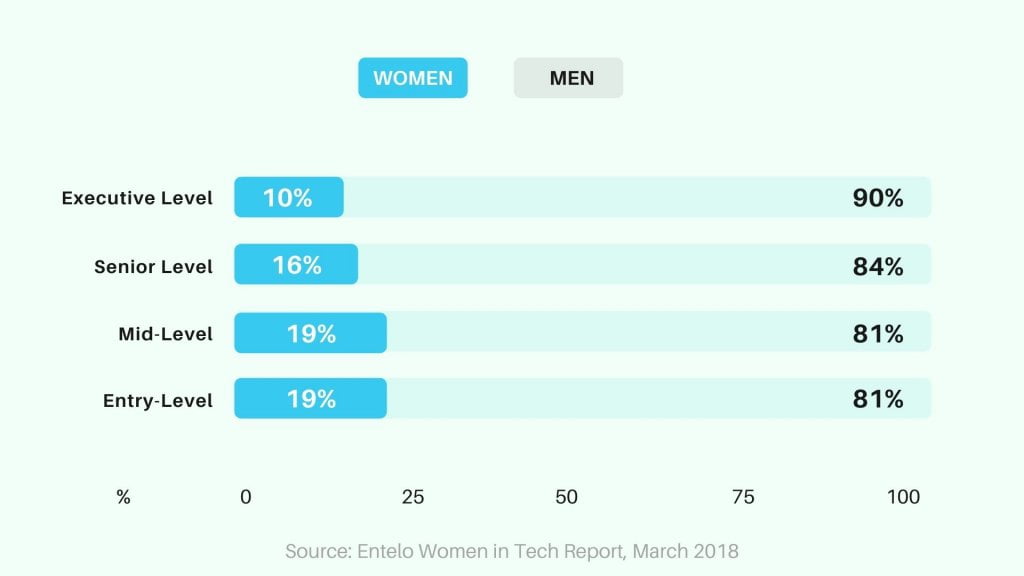
During the onset of the pandemic, many companies were able to transition to remote work. Along the way, we’ve made countless discoveries about this new work setup. For instance, a recent PwC survey found that 83% of employers considered the shift to remote work a success. Moreover, 52% of respondents reported higher productivity from their employees. Even when lockdown restrictions were lifted, some businesses made working from home a permanent part of their practice.
An increase in productivity is not the only positive outcome of this setup. Remote work has been bringing more opportunities to underrepresented talent and allowing diversity in the workplace. Moreover, companies are able to attract and hire people from diverse backgrounds. By ushering greater inclusion initiatives, remote work is destroying obstacles that traditional offices have put in place.
Workplace Diversity Issues
Diversity in the workplace is a major issue across industries, especially in the tech industry. The labor population in this sector has been infamously known to skew towards male employees. According to the Bureau of Labor Statistics, women make up 50.4% of all employed adults in the U.S. However, data from the National Center for Women & Information Technology (NCWIT) says that only 25% of them hold computing roles. What’s more, an Entelo survey revealed that only 10% of women in tech are in executive-level positions.

According to the U.S. Bureau of Labor Statistics, the average unemployment rate in the country was at 3.8% in 2018. However, the figures vary significantly by race and ethnicity:
- Black or African American: 6.5%
- Hispanic or Latin: 4.7%
- White: 3.5%
- Asian: 3.0%
Without remote work, organizations cannot recruit talent outside their geographical profile. On the other hand, a flexible work option lets them diversify their workforce. What’s more, it helps organizations avoid the legal and moral implications of discriminatory workplace practices. Saatchi & Saatchi CEO Andrea Diquez shares her thoughts on this subject:
“Remote work has become an important part of our lives and has huge potential to bring more diversity into the fold.”
Eliminating Relocation Costs and Location Biases
Businesses tend to have location biases when it comes to hiring employees. According to a University of Notre Dame study, job candidates who live 5-6 miles farther from the potential workplace are less likely to get callbacks. The researchers attribute this location bias to the companies’ efforts to alleviate the high turnover rates caused by longer commutes. For them, hiring talent nearby can be more efficient and affordable. After all, candidates wouldn’t have to deal with the logistics or costs of traveling for interviews or relocating for the role.
Sadly, when recruiters focus on a limited geographical pool, it can be challenging to source and attract underrepresented candidates. For instance, only 5.2% of San Francisco’s population is Black or African American. Unfortunately, research shows that Black candidates are twice as likely as other candidates to be unwilling to relocate for an entry-level position. They will only do so if the company provides a stipend because moving to a different city can be expensive.
Now, by opening opportunities for remote work, a company can break geographical barriers and cast a wider net. What’s more, there is available data online that will inform recruiters where to find underrepresented candidates. They will also know where to look if they’re aiming to hire within a specific demographic. By letting employees work from home, HR practitioners may also be able to attract talents who are unwilling to relocate.
Create a Stronger Sense of Safety for LGBTQ+ Employees
A 2018 Human Rights Campaign study revealed that 53% of LGBTQ+ employees hear jokes about gay or lesbian people in the workplace. Moreover, one in five of these workers have been told by co-workers to dress in a more masculine or feminine manner. Meanwhile, the 2015 US Transgender Survey from the National Center for Transgender Equality revealed the emotional and physical distress that LGBTQ+ employees encounter. 59% of respondents who identify as non-binary or transgender have to worry about using the restroom. 32% limited their fluid and food intake to reduce trips to the restroom. As a result of avoiding bathrooms, 8% reported having experienced kidney-related or urinary tract-related health issues.
Now, if remote work is allowed, transgender employees will have an easier experience transitioning. An article published in The Wall Street Journal illustrated how working from home is less stressful for non-binary trans employees. With remote work, they aren’t as worried about the lowered pitch of their voice due to testosterone therapy. After all, they can communicate and collaborate with their co-workers via Slack which can further promote diversity in the workplace.
Better Access for Workers with Disabilities
The Centers for Disease Control and Prevention reports that 61 million adults in the country live with a disability. For many of these individuals, a traditional office can be a daunting place filled with obstacles. It can even be too physically demanding for them to travel to work daily. For some, there’s no dedicated support that will help them navigate through their workplace.
When a company offers opportunities for remote work, chronically ill or disabled individuals can join the workforce without unnecessary difficulty or discomfort. Before the pandemic, physically challenged employees had a hard time asking their employers for a chance to work remotely. However, because of the widespread promotion of working from home in 2020, it has been proven that most sectors can allow flexible work options.
Tools for Working from Home Are Widely Available
These days, there are lots of remote work tools that enable companies to collaborate with a geographically distributed team. For instance, you can use apps like Asana, Slack, and Basecamp to manage projects and talk with your employees. Now, if you’re worried about the productivity of your team, you can use a time tracking app.
Of course, when you’re promoting diversity in the workplace, you should exhaust all means to ensure that your employees feel respected. In this case, you should use a time tracker that promotes ethical monitoring. Traqq is an example of a tool that helps remote workers remain accountable without harming their privacy. This app takes random screenshots and ten-second video recordings of a user’s desktop. However, the captured images and videos are intentionally blurred to an extent that prevents sensitive information from becoming legible.
Remote Work Enables Companies to Enjoy the Benefits of Diversity in the Workplace
It can be career-changing for employees to have access to the benefits of flexible work options. Moreover, companies can open their doors to a diverse workforce, which can include expecting parents, individuals with disabilities, members of the LGBTQ+ community, and racial minorities.
Besides, allowing employees to work from home means that the business is making reasonable accommodation for disabled people. According to the U.S. Equal Employment Opportunity Commission, companies should modify their workplace policies to accommodate these individuals. Otherwise, they should modify their remote work program to allow disabled employees to work from home.
By using remote work strategies and policies, employers can make individuals more comfortable in disclosing their condition and/or sexual orientation. With a comprehensive work-from-home program, you’re opening your doors to a highly diverse team.

